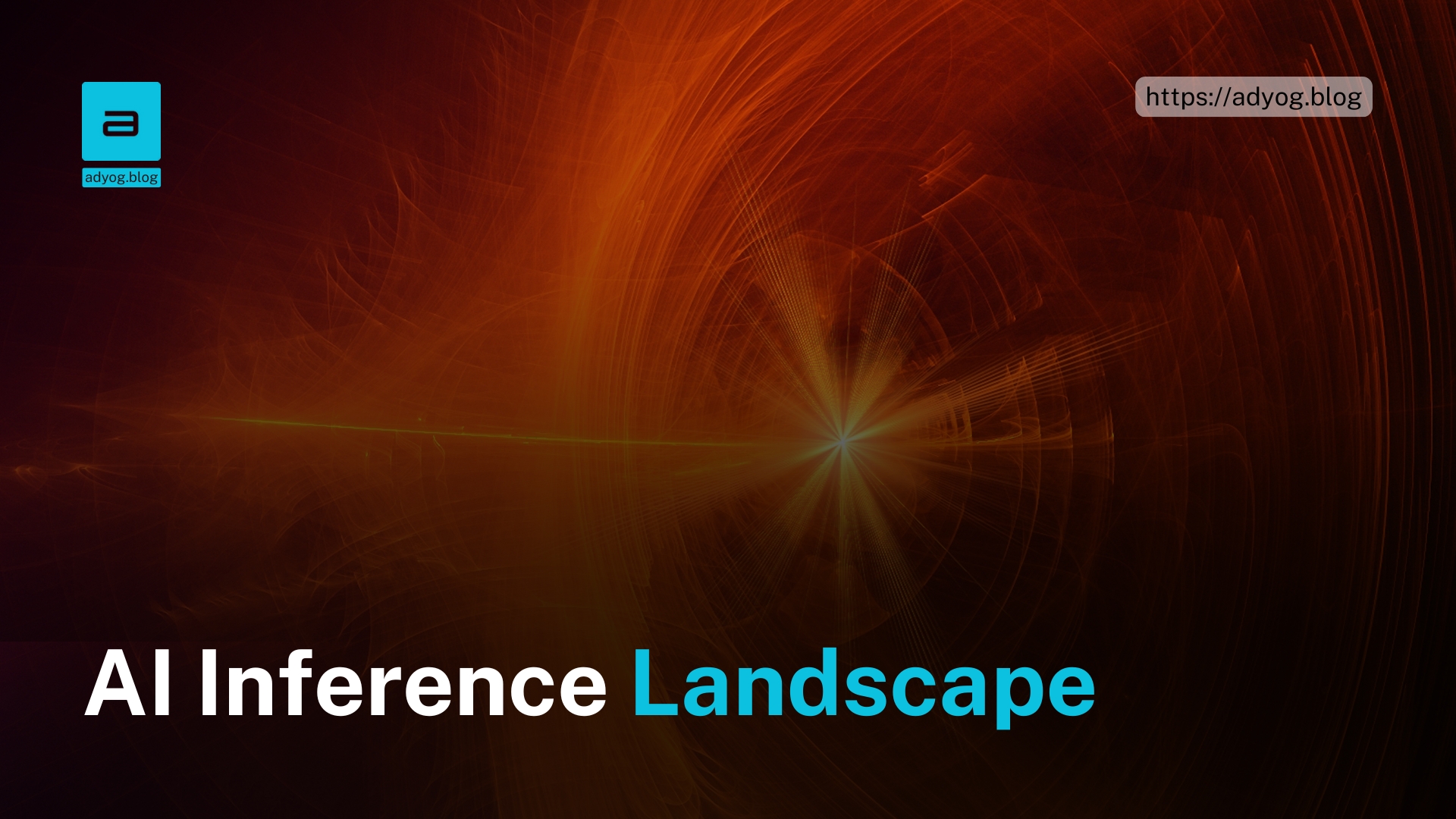AI inference is at the core of turning machine learning models into actionable results. This article explores the AI inference landscape, diving into its categories—closed models, managed open-source solutions, and fine-tuned DIY approaches. You’ll learn about the infrastructure, challenges, and optimization techniques shaping this rapidly evolving domain.
In this article, we explore the evolving AI inference landscape, delving into its categories, optimization techniques, and infrastructure choices, along with the emerging role of Retrieval-Augmented Generation (RAG). Our aim is to help you navigate this complex domain and make informed decisions for your AI projects.
Categories of AI Inference
1. Closed Models: General Purpose Intelligence at Scale
Closed models, like OpenAI’s GPT and Anthropic’s Claude, are proprietary systems offering pre-trained models via APIs. These models excel in natural language understanding, reasoning, and generating human-like responses.
Key Features:
- Seamless Integration: APIs make it easy to adopt for developers.
- State-of-the-Art Performance: Closed models often lead in benchmarks due to proprietary optimizations.
- Ease of Use: Abstracted complexities allow rapid deployment.
Challenges:
- Limited Customization: These models cannot be tailored to niche use cases.
- High Costs: Pay-per-use pricing can become expensive at scale.
- Data Dependency: Reliance on external providers may raise privacy concerns.
Example Use Cases:
Customer support chatbots, general-purpose text summarization, and creative content generation.
2. Managed Open-Source Models: A Flexible Middle Ground
Cloud platforms like AWS, Azure, and Google Cloud offer managed services for open-source models such as Llama, Bloom, and GPT-J. These services combine the flexibility of open-source with the operational ease of managed infrastructure.
Key Features:
- Cost-Effectiveness: Cheaper than closed models for enterprise-grade deployments.
- Transparency: Users have visibility into the models and data pipelines.
- Control Over Data: Better suited for applications with strict data compliance requirements.
Challenges:
- Requires Expertise: Some knowledge is needed for fine-tuning and managing deployments.
- Performance Gap: Open-source models may lag behind proprietary ones in some tasks.
Example Use Cases:
Enterprise-grade applications, internal automation systems, and projects requiring moderate customization.
3. Fine-Tuned DIY Solutions: Tailored for Specific Needs
Organizations often fine-tune open-source models with proprietary datasets to optimize performance for niche tasks. This approach provides high levels of control and cost savings for targeted applications.
Key Features:
- Custom Optimization: Models can be adapted to unique requirements.
- Competitive Edge: Fine-tuned models may outperform general-purpose solutions in specific tasks.
- Cost Savings: Efficient use of resources when deployed correctly.
Challenges:
- Complex Setup: Fine-tuning involves data preparation, hyperparameter tuning, and infrastructure management.
- Resource Intensive: Requires robust compute power, such as GPUs or TPUs.
Example Use Cases:
Specialized chatbots, legal or medical AI applications, and domain-specific predictive analytics.
Optimizing AI Inference: Techniques and Tools
- Model Optimization Techniques:
- Quantization: Reducing model precision (e.g., from FP32 to INT8) to lower memory and compute costs.
- Pruning: Removing unnecessary parameters to streamline models.
- Knowledge Distillation: Training smaller models to mimic the behavior of larger models.
- Infrastructure Options:
- Hardware: CPUs for lightweight tasks, GPUs and TPUs for high-performance inference, and edge devices for on-premises deployments.
- Cloud Services: Platforms like AWS SageMaker, Google AI Platform, and Azure Machine Learning.
- Hybrid Solutions: Combining on-premises and cloud setups for flexibility and cost efficiency.
- Data Quality Considerations:
- High-quality data reduces model errors and bias.
- Privacy and security protocols, such as differential privacy, ensure compliance with regulations.
- Ethical Implications:
- Fairness: Ensuring models perform equitably across demographics.
- Transparency: Making decision processes understandable.
- Accountability: Defining responsibility for model decisions.
The Role of Retrieval-Augmented Generation (RAG)
RAG combines the power of large language models (LLMs) with vector databases to enhance AI performance. By retrieving relevant data during inference, RAG eliminates the need for exhaustive fine-tuning, making it a cost-effective alternative.
Advantages:
- Improved Accuracy: Retrieves context-specific information in real time.
- Reduced Hallucination: Limits the generation of incorrect or unrelated outputs.
- Flexibility: Ideal for applications requiring constant updates, such as knowledge bases.
Limitations:
- Latency: Retrieval adds overhead.
- Infrastructure Needs: Requires efficient database and indexing mechanisms.
Example Use Cases:
Customer support systems, document summarization, and personalized recommendations.
Comparing Inference Strategies: Closed vs. Open vs. DIY
| Aspect | Closed Models | Managed Open-Source | Fine-Tuned DIY |
|---|---|---|---|
| Performance | Cutting-edge | Competitive | Highly specific |
| Customization | Limited | Moderate | High |
| Cost | High | Moderate | Low (with optimization) |
| Ease of Use | Very high | High | Moderate to low |
| Data Privacy | Low to moderate | High | High |
| Use Case | General-purpose applications | Enterprise workflows | Niche, domain-specific tasks |
Conclusion: Choosing the Right Inference Strategy
Selecting an inference strategy depends on your goals:
- Use closed models for quick, general-purpose deployments.
- Opt for managed open-source models for enterprise applications requiring control and flexibility.
- Choose fine-tuned DIY solutions when precision and optimization are paramount.
The future of AI inference lies in balancing performance, cost, and customization. Understanding the capabilities and limitations of each approach empowers you to design scalable, effective AI solutions.
Explore More
- AI Services: Explore our AI services for more details.
- Digital Product Development: Discover our digital product development expertise.
- Design Innovation: Learn about our design innovation approach.





Leave a Reply